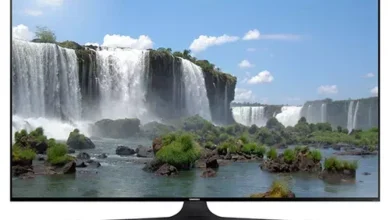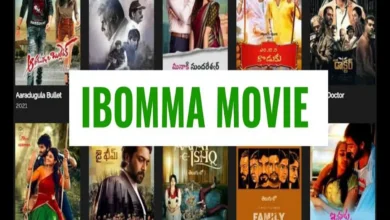Motion Activated Cards for Facilitation: Enhancing Engagement and Interaction

Introduction
Facilitation in meetings, workshops, and learning environments requires innovative tools that keep participants actively engaged. motion-activated cards for facilitation are emerging as a game-changer in the facilitation space. These cards, embedded with motion sensors, activate specific actions or responses, such as sounds, lights, or text prompts, when moved or interacted with. They introduce an element of surprise and interaction, promoting participant engagement, creative thinking, and active learning.
What Are Motion-Activated Cards?
Motion-activated cards are interactive facilitation tools embedded with motion-sensing technology. When a card is moved, flipped, or shaken, it triggers a pre-programmed action, such as sound effects, visual prompts, or digital messages. The technology behind these cards can range from simple accelerometers to advanced microchips, allowing for highly customized interactions.
These cards add a tactile and sensory element to facilitation activities, creating more engaging experiences compared to traditional printed cards.
How Do Motion-Activated Cards Work?
The mechanism of motion-activated cards relies on motion sensors and trigger modules. When participants interact with the card, the sensor detects motion and activates pre-programmed actions, such as:
- Playing audio clips (e.g., instructions, music, or sound prompts)
- Flashing LED lights to indicate progress or signal a response
- Displaying text messages through a connected screen or projector
- Sending wireless signals to trigger further activities, such as polls or quizzes
This interactive technology keeps participants actively involved in the facilitation process.
Benefits of Using Motion-Activated Cards for Facilitation
1. Increases Participant Engagement
Traditional facilitation tools can sometimes feel repetitive or passive. Motion-activated cards capture attention and foster active participation, leading to better retention of information.
2. Promotes Hands-On Learning
Many learners benefit from kinesthetic activities. The tactile nature of motion-activated cards encourages participants to interact physically, which enhances learning outcomes.
3. Sparks Creativity and Curiosity
Participants are more likely to engage when they encounter unexpected actions, such as audio prompts or flashing lights. The novelty of these cards helps in brainstorming sessions or creative workshops by breaking conventional patterns of thinking.
4. Facilitates Group Collaboration
Facilitators can use these cards to trigger team-based activities or challenges, promoting communication and teamwork. For example, cards can assign random group tasks or generate discussion topics on the spot.
5. Adaptable for Multiple Scenarios
Motion-activated cards are highly customizable and can be adapted to different facilitation formats, including corporate training, classroom teaching, leadership workshops, or ice-breaker activities.
Applications of Motion-Activated Cards in Facilitation
1. Ice-Breakers and Energizers
At the start of workshops, facilitators can use these cards to initiate quick warm-up activities. For example, participants could draw a card that plays a sound prompt, which triggers an ice-breaker task.
2. Learning Games and Quizzes
In educational settings, motion-activated cards can be integrated into learning games and quizzes. When a participant selects the correct answer card, it triggers a confirmation sound, adding excitement and reinforcing learning.
3. Corporate Training Programs
These cards are effective in corporate facilitation scenarios, such as team-building exercises or leadership development workshops. Facilitators can program cards to assign challenges, discussion prompts, or tasks dynamically throughout the session.
4. Reflection and Feedback Sessions
During reflection activities, participants can use motion-activated cards to provide anonymous feedback or share personal insights. For example, shaking a card might generate a visual prompt to guide reflection.
Where to Buy Motion-Activated Cards for Facilitation
1. Specialized Facilitation Tool Providers
Some companies specialize in innovative facilitation tools. These providers offer high-quality, customizable motion-activated cards specifically designed for professional facilitators.
2. Educational Supply Stores
For classroom use, educational supply vendors often stock interactive learning tools, including motion-activated cards tailored for younger audiences.
3. Amazon and eCommerce Marketplaces
Amazon offers a range of motion-activated cards, though it’s essential to check product reviews and ensure compatibility with your needs before purchasing.
Conclusion
Motion-activated cards represent a powerful addition to the facilitator’s toolkit. Their interactive design encourages active participation, enhances creativity, and promotes collaboration. By incorporating these innovative cards into sessions, facilitators can create engaging experiences that leave a lasting impact on participants. Whether you’re leading a corporate training program, facilitating team-building activities, or teaching in a classroom, motion-activated cards provide a unique way to enhance engagement and boost learning outcomes.
FAQs
1. What are motion-activated cards used for?
Motion-activated cards are used to enhance engagement in facilitated sessions, such as workshops, training programs, and classrooms, by providing interactive triggers like sound, light, or messages.
2. How do motion-activated cards work?
These cards use motion sensors to detect movement and activate pre-programmed actions, such as playing sounds, flashing lights, or sending wireless signals.
3. Can motion-activated cards be customized?
Yes, motion-activated cards are highly customizable. Facilitators can program them to trigger specific actions aligned with their session goals.
4. Where can I buy motion-activated cards?
You can purchase them from specialized facilitation tool providers, educational supply stores, or online marketplaces like Amazon.
5. Are motion-activated cards suitable for all age groups?
Yes, these cards are versatile and can be used in both professional settings and educational environments, making them suitable for participants of all ages.





